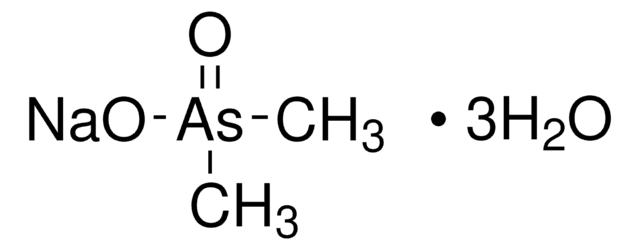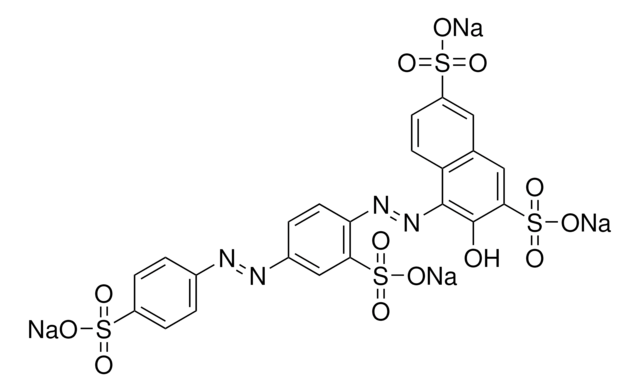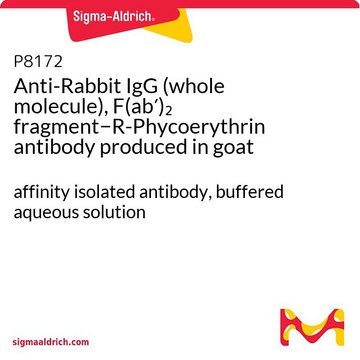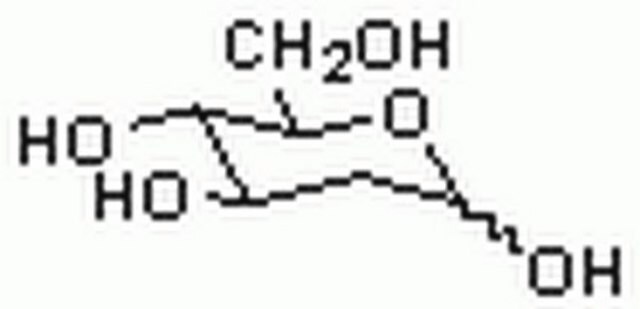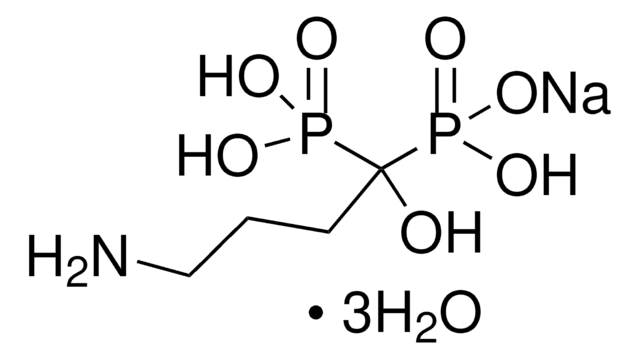X4753
XCT790
≥98% (HPLC), solid
Synonym(e):
3-[4-(2,4-Bis-trifluoromethylbenzyloxy)-3-methoxyphenyl]-2-cyano-N-(5-trifluoromethyl-1,3,4-thiadiazol-2-yl)acrylamide
About This Item
Empfohlene Produkte
Qualitätsniveau
Assay
≥98% (HPLC)
Form
solid
Farbe
yellow
Löslichkeit
DMSO: ≥10 mg/mL
Lagertemp.
2-8°C
SMILES String
COc1cc(ccc1OCc2ccc(cc2C(F)(F)F)C(F)(F)F)\C=C(/C#N)C(=O)Nc3nnc(s3)C(F)(F)F
InChI
1S/C23H13F9N4O3S/c1-38-17-7-11(6-13(9-33)18(37)34-20-36-35-19(40-20)23(30,31)32)2-5-16(17)39-10-12-3-4-14(21(24,25)26)8-15(12)22(27,28)29/h2-8H,10H2,1H3,(H,34,36,37)/b13-6+
InChIKey
HQFNFOOGGLSBBT-AWNIVKPZSA-N
Anwendung
- as an estrogen-related receptor (ERR)α inverse agonist in C2C12 myotubes
- as an estrogen-related receptor (ERR)α inverse agonist to elucidate decidualization functionality of ERRα in endometrial embryonic stem cells
- as an autophagy inducer in human neuroblastoma SH-SY5Y and HeLa cell lines.
Biochem./physiol. Wirkung
H-Sätze
P-Sätze
Gefahreneinstufungen
Aquatic Chronic 4
Lagerklassenschlüssel
11 - Combustible Solids
WGK
WGK 3
Flammpunkt (°F)
Not applicable
Flammpunkt (°C)
Not applicable
Persönliche Schutzausrüstung
Eyeshields, Gloves, type N95 (US)
Analysenzertifikate (COA)
Suchen Sie nach Analysenzertifikate (COA), indem Sie die Lot-/Chargennummer des Produkts eingeben. Lot- und Chargennummern sind auf dem Produktetikett hinter den Wörtern ‘Lot’ oder ‘Batch’ (Lot oder Charge) zu finden.
Besitzen Sie dieses Produkt bereits?
In der Dokumentenbibliothek finden Sie die Dokumentation zu den Produkten, die Sie kürzlich erworben haben.
Unser Team von Wissenschaftlern verfügt über Erfahrung in allen Forschungsbereichen einschließlich Life Science, Materialwissenschaften, chemischer Synthese, Chromatographie, Analytik und vielen mehr..
Setzen Sie sich mit dem technischen Dienst in Verbindung.

